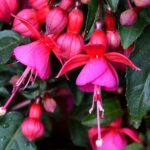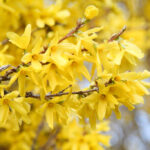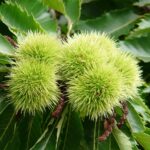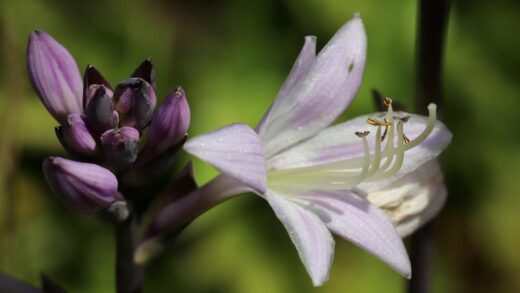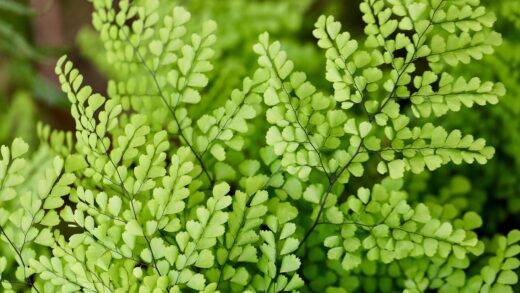Watering and fertilizing the slender parrot leaf

Providing the correct balance of water and nutrients is fundamental to cultivating a vibrant and healthy slender parrot leaf. This plant’s lush, colorful foliage is a direct result of its access to these essential resources, and mastering the art of watering and fertilizing is key to unlocking its full decorative potential. It is a common misconception that because it is a tropical plant, it should be kept constantly saturated; in reality, its needs are more nuanced. The goal is to maintain consistent soil moisture without creating the waterlogged conditions that can be so detrimental to its root system. This requires a sensitive and observant approach rather than a rigid, one-size-fits-all schedule.
Fertilization, similarly, is a matter of providing the right nutrients at the right time to support the plant’s active growth. The production of intensely colored leaves is an energy-intensive process that can quickly deplete the nutrients available in the soil. Regular feeding throughout the growing season replenishes these vital elements, ensuring the plant has the fuel it needs to maintain its vigor and stunning appearance. However, just as with watering, moderation is crucial. Over-fertilization can be just as harmful as a lack of nutrients, leading to root burn and other serious health issues.
The interplay between watering and fertilizing is also important to understand. Nutrients can only be absorbed by the plant’s roots when they are dissolved in water. Therefore, a proper watering routine is a prerequisite for effective fertilization. Furthermore, the frequency and amount of both water and fertilizer will need to be adjusted throughout the year. The demands of a plant in the peak of its summer growth are vastly different from those of a plant entering a period of slower growth or dormancy in the cooler months.
Ultimately, the key to success lies in observation. Learning to read the signals your plant sends—the feel of the soil, the turgidity of the leaves, the rate of growth—is far more effective than blindly following a set calendar. By developing this intuitive understanding of your plant’s needs, you can provide the tailored care that will allow your slender parrot leaf to not just survive, but to truly flourish with exceptional health and breathtaking color.
Fundamental watering principles
The primary principle of watering the slender parrot leaf is to keep the soil consistently moist but never soggy or waterlogged. The plant does not tolerate drought well and will wilt dramatically if the soil is allowed to dry out completely. However, it is equally intolerant of having its roots sit in standing water, which can quickly lead to suffocation and the onset of root rot. The ideal approach is to water the plant thoroughly whenever the top 2 to 3 centimeters of the soil feels dry to the touch. This method ensures that the roots receive the moisture they need while allowing the upper layer of soil to dry out slightly between waterings, which helps to promote healthy root aeration.
More articles on this topic
When you do water, it is important to do so deeply and thoroughly. Apply water to the base of the plant, avoiding the foliage as much as possible to discourage fungal diseases. Continue watering until you see excess water beginning to drain freely from the bottom of the pot or until the soil in a garden bed is saturated to a depth of at least 15 centimeters. This deep watering encourages the roots to grow downwards in search of moisture, establishing a stronger and more resilient root system. Shallow, frequent waterings, in contrast, only wet the top layer of soil and can lead to a weak, shallow root system that is more susceptible to drying out.
The type of water you use can also have an impact, although the slender parrot leaf is generally not overly sensitive. In most cases, tap water is perfectly acceptable. However, if your tap water is particularly hard (high in mineral salts) or has been treated with chlorine or fluoride, these substances can build up in the soil over time and potentially cause issues. Allowing tap water to sit out overnight before using it can help some of the chlorine to dissipate. If you notice signs of salt buildup, such as a white crust on the soil surface, using filtered or rainwater for a period can help to flush the soil.
The time of day you water can also make a difference, particularly for outdoor plants. It is best to water in the early morning. This gives the plant ample moisture to draw upon during the heat of the day and allows any water that splashes onto the foliage to evaporate quickly in the morning sun, reducing the risk of fungal problems. Watering in the evening can be a secondary option, but it may leave the foliage damp overnight, which can create a more favorable environment for diseases to develop, especially in humid climates.
Recognizing signs of over and under-watering
Learning to recognize the distinct visual cues of both over-watering and under-watering is a crucial skill for any gardener. Under-watering is often the easiest to identify. When the slender parrot leaf does not receive enough moisture, its first response is to wilt. The leaves and stems will droop and look limp and lifeless. This is a clear signal that the plant is thirsty and needs water immediately. Fortunately, if caught early, the plant is remarkably resilient and will typically bounce back to its full turgidity within a few hours of receiving a thorough watering.
More articles on this topic
If the under-watering is prolonged or frequent, more severe symptoms will appear beyond simple wilting. The lower leaves may start to turn yellow and then brown before eventually drying up and falling off the plant. The edges of the remaining leaves may also become brown and crispy to the touch. Growth will be stunted, and the plant will have an overall stressed and unhealthy appearance. To correct this, provide a deep soaking and then commit to a more consistent watering schedule, checking the soil moisture regularly to prevent it from drying out completely again.
Over-watering, while stemming from good intentions, is often more dangerous and can be harder to diagnose because some of its symptoms can mimic those of under-watering. A classic sign of an over-watered plant is the yellowing of leaves, particularly the lower ones, which may then drop off. However, unlike the dry, crispy leaves of an under-watered plant, the leaves of an over-watered one will often feel soft and limp. The plant may also appear wilted, which can be confusing. It wilts not from a lack of water, but because the roots are drowning, have started to rot, and can no longer absorb water and nutrients to supply the foliage.
If you suspect over-watering, the first step is to check the soil. If it feels soggy or waterlogged several days after you last watered, you have found the problem. Other signs can include a musty or sour smell coming from the soil, which indicates root decay. To remedy the situation, you must stop watering immediately and allow the soil to dry out significantly. If the plant is in a container, you may need to gently remove it to inspect the roots. Rotted roots will be brown or black and mushy. Trim away any damaged roots and repot the plant in fresh, well-draining soil. Preventing over-watering through careful soil selection and proper watering technique is always the best course of action.
Choosing the right fertilizer
To support the vigorous growth and intense coloration of its foliage, the slender parrot leaf benefits from regular feeding during its active growing season. The best type of fertilizer to use is a balanced, water-soluble formula. A balanced fertilizer is one that contains a relatively equal ratio of the three primary macronutrients: nitrogen (N), phosphorus (P), and potassium (K). Look for a product with an N-P-K ratio such as 10-10-10 or 20-20-20. Nitrogen is particularly important as it is a key component of chlorophyll and is essential for promoting lush, leafy growth, which is the main attraction of this plant.
Liquid or water-soluble fertilizers are generally preferred over granular, slow-release types for container-grown plants. This is because they provide nutrients in a readily available form that the plant can absorb immediately. It also gives you more precise control over the amount and frequency of feeding. When using a liquid fertilizer, it is often recommended to dilute it to half the strength suggested on the product label. This approach of feeding more frequently with a weaker solution helps to provide a steady supply of nutrients without overwhelming the plant or risking fertilizer burn on the sensitive roots.
For plants grown in garden beds that have been well-amended with compost and other organic matter, the need for supplemental chemical fertilizers is reduced. The organic material will break down slowly over the season, providing a steady, gentle supply of nutrients. However, even in enriched soil, a light feeding with a balanced liquid fertilizer once a month can provide a welcome boost, especially for fast-growing plants or those in areas with heavy rainfall that can leach nutrients from the soil. Always water the soil before applying any type of fertilizer to prevent root burn.
Organic fertilizers are another excellent option for the slender parrot leaf. These can include fish emulsion, seaweed extract, or compost tea. Organic options not only provide nutrients but also help to improve the soil’s health and microbial activity. They tend to be more gentle and slower-acting than synthetic fertilizers, reducing the risk of over-fertilization. While they may have a distinct odor, especially fish emulsion, they are a fantastic choice for gardeners who prefer a more natural approach to plant care.
Application techniques and frequency
The frequency of fertilization is directly tied to the plant’s growth cycle. The slender parrot leaf should only be fertilized during its active growing period, which typically runs from spring through late summer. During this time, a consistent feeding schedule will provide the necessary fuel for producing vibrant, healthy foliage. For plants grown in containers using a half-strength liquid fertilizer, a good routine is to feed them every two to four weeks. For plants in garden beds, a monthly application is usually sufficient to supplement the nutrients already present in the soil.
It is crucial to cease all fertilization in the autumn and winter months. As the days shorten and temperatures cool, the plant’s growth will naturally slow down. It enters a semi-dormant state where its need for nutrients is drastically reduced. Continuing to fertilize during this period is not only wasteful but can be harmful. The unused fertilizer salts can accumulate in the soil, potentially burning the roots and causing long-term damage. Resume your feeding schedule in the spring when you see clear signs of new growth emerging.
The method of application is just as important as the frequency. Always make sure the soil is moderately moist before you apply any fertilizer solution. Applying fertilizer to dry soil can draw moisture out of the roots, causing chemical burn and severe damage to the plant. It is a good practice to integrate fertilizing into your watering routine. You can water the plant first with plain water, and then follow up with the diluted fertilizer solution. This ensures the roots are hydrated and ready to absorb the nutrients safely.
When applying liquid fertilizer, pour the solution evenly over the entire soil surface at the base of the plant. Try to avoid splashing the fertilizer directly onto the leaves, as some formulations can cause leaf scorch. After applying the fertilizer, it is not necessary to water again immediately, as the fertilizer was already mixed with water. By following these simple application techniques, you can ensure that your slender parrot leaf receives the full benefit of the nutrients you provide, without any of the potential negative side effects of improper application.
Adjusting practices for different seasons
Adapting your watering and fertilizing habits to the changing seasons is essential for the year-round health of the slender parrot leaf. The needs of the plant are not static; they fluctuate significantly with changes in light, temperature, and growth rate. During the long, warm days of spring and summer, the plant is in its peak growth phase. It is actively producing new leaves and requires a consistent supply of both water and nutrients to fuel this development. During this period, you will need to monitor the soil moisture most frequently and adhere to your regular fertilizing schedule.
As autumn approaches, you will notice a natural slowing of the plant’s growth. The days become shorter, light intensity decreases, and temperatures begin to drop. In response to these environmental cues, the plant’s metabolic processes slow down, and its demand for water and nutrients diminishes. This is the time to begin gradually reducing the frequency of your watering. Allow the soil to dry out a bit more between waterings than you would in the summer. It is also the time to stop fertilizing completely, as discussed earlier, to allow the plant to prepare for its winter rest period.
During the winter, the slender parrot leaf enters a state of semi-dormancy, especially when grown indoors or in climates with mild winters. Its water requirements will be at their lowest point of the year. Over-watering during this period is the most common cause of winter failure for this plant. You should only water when the top few centimeters of the soil are thoroughly dry. For many indoor plants, this might mean watering only once every few weeks. No fertilizer should be given at all during the winter months. The goal is simply to keep the plant alive and healthy until spring returns.
When spring arrives, and you begin to see signs of new life—such as new leaves or stems beginning to emerge—you can gradually start to increase your watering frequency back to its summer level. This is also the time to resume your fertilization program, starting with a half-strength dose to gently reawaken the plant. By attuning your care routine to this natural annual cycle, you work with the plant’s rhythms rather than against them. This seasonal sensitivity is the hallmark of a skilled and successful gardener.
📷 Flickr / Szerző: cultivar413 / Licence: CC BY 2.0









